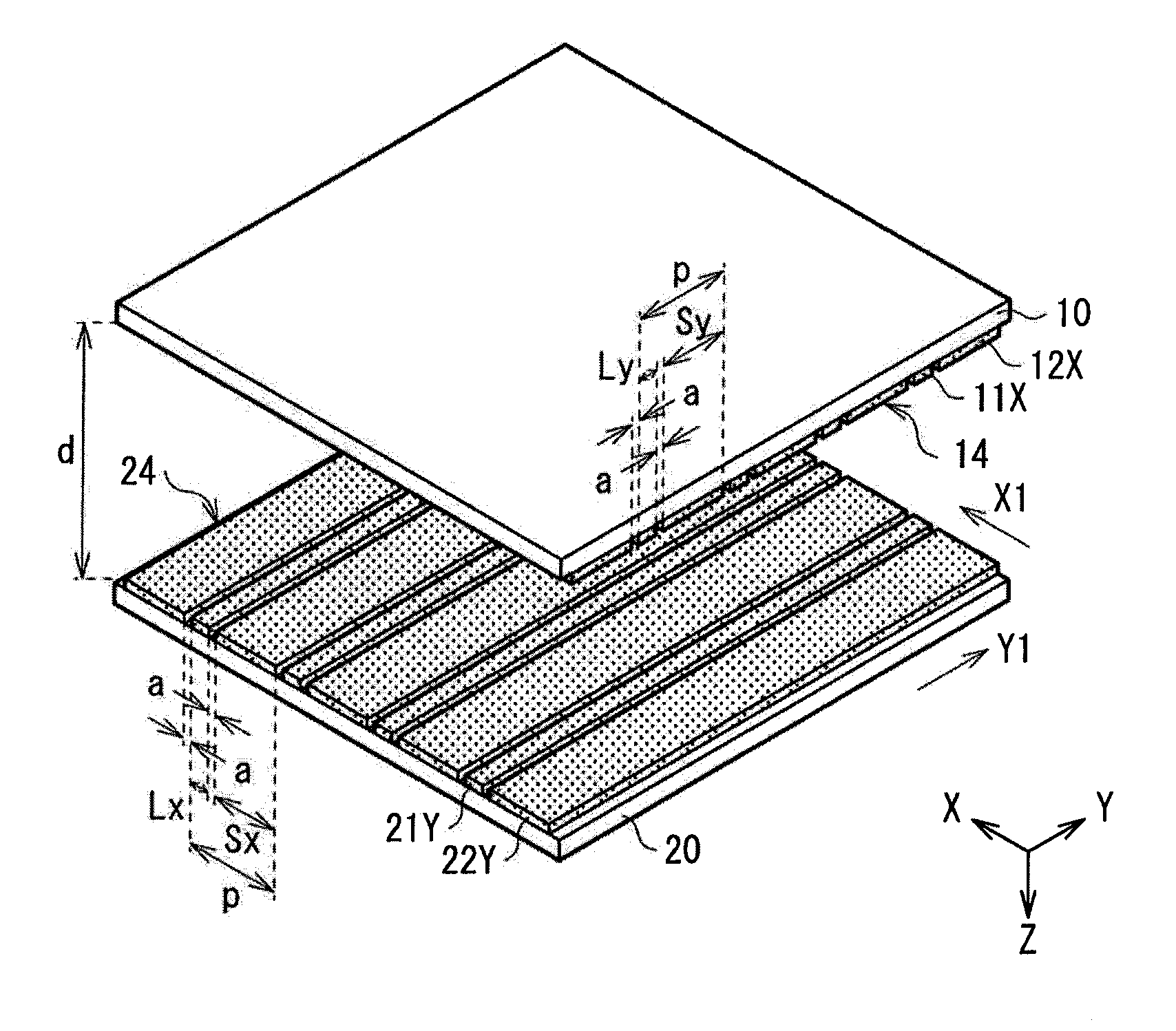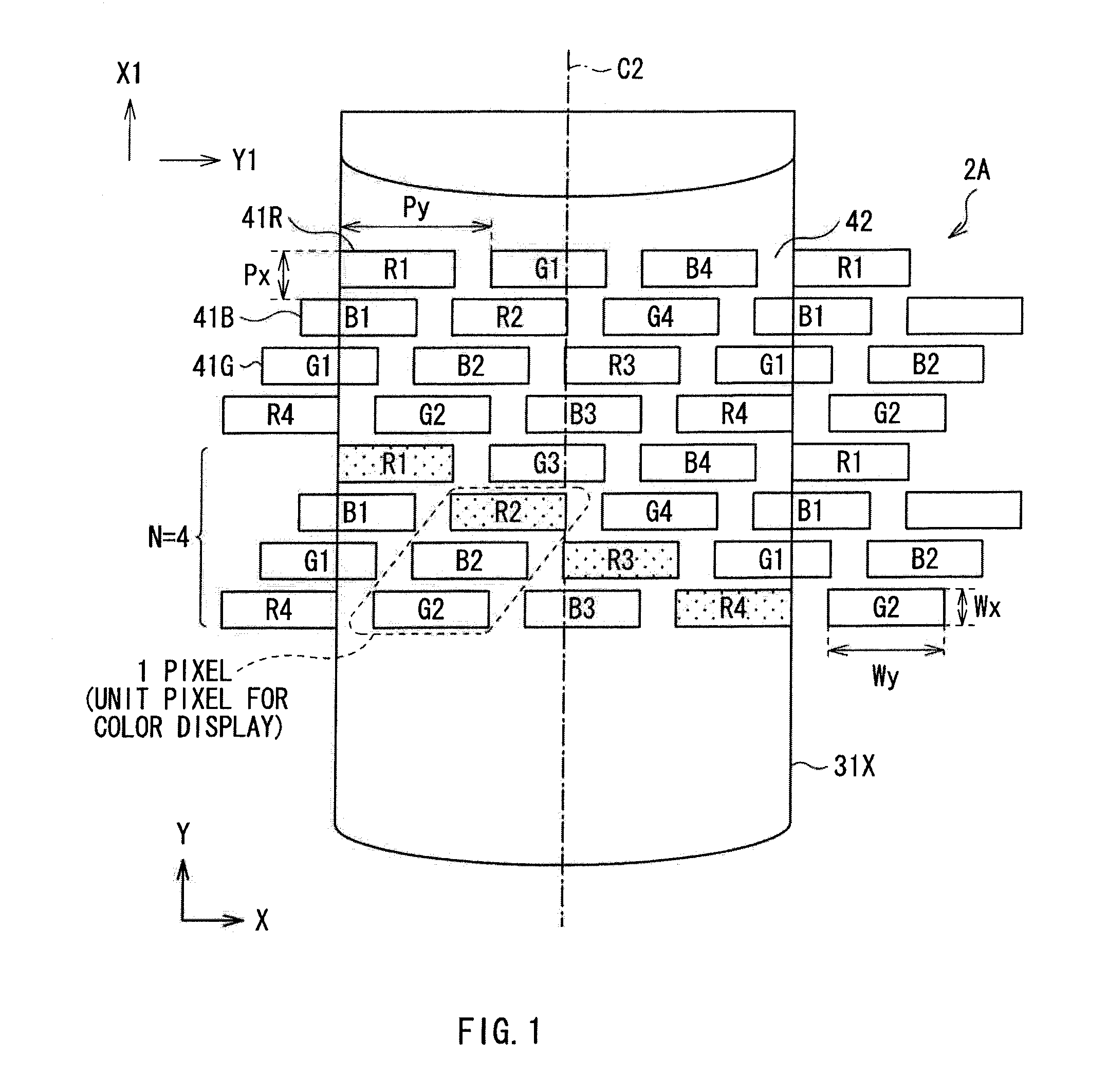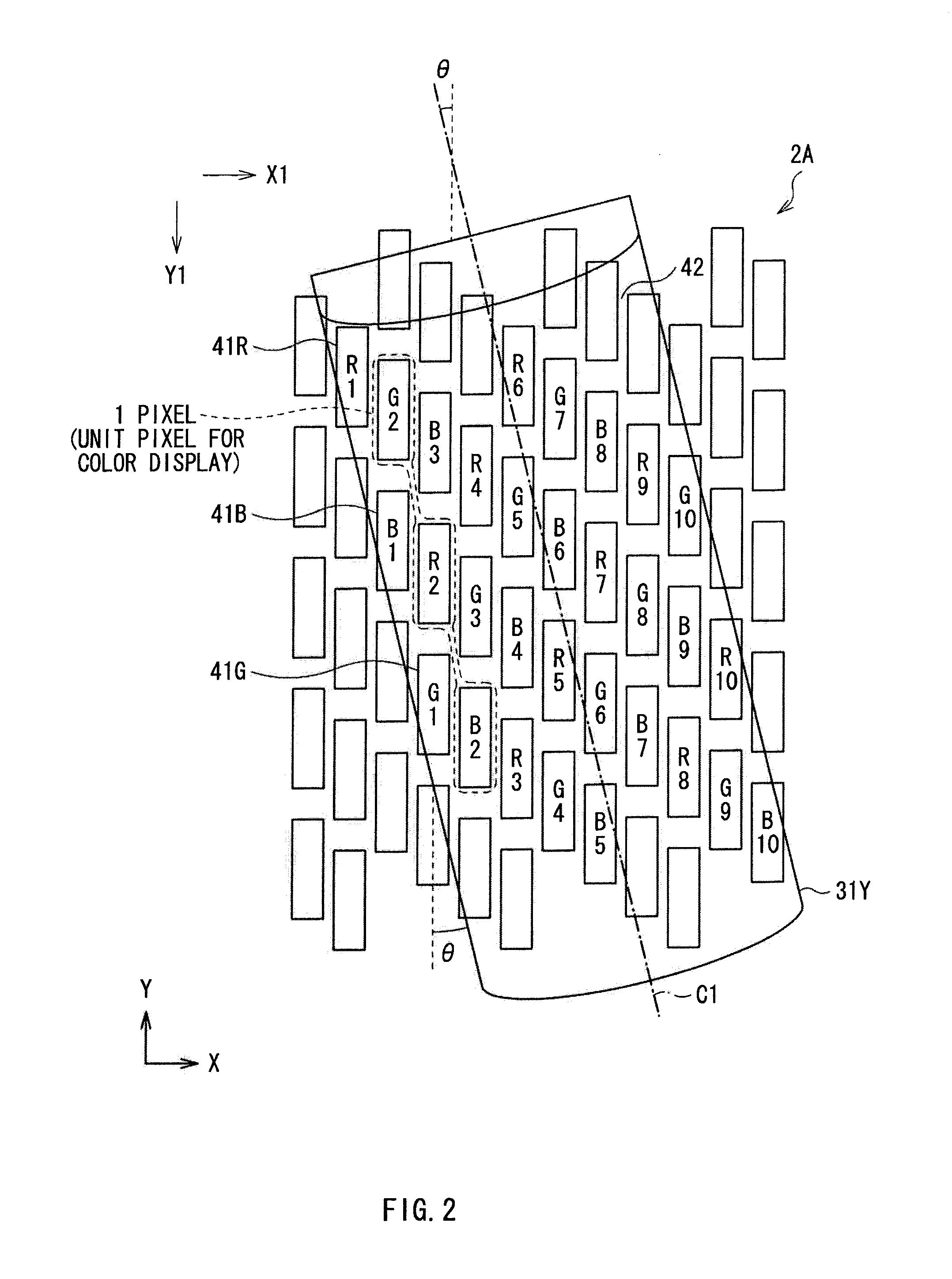Stereoscopic display
a stereoscopic display and display technology, applied in the field of stereoscopic display, can solve problems such as color unevenness perception, and achieve the effects of less color unevenness, favorable stereoscopic vision, and favorable stereoscopic vision
- Summary
- Abstract
- Description
- Claims
- Application Information
AI Technical Summary
Benefits of technology
Problems solved by technology
Method used
Image
Examples
first embodiment
Whole Configuration of Stereoscopic Display
[0055]FIG. 3 illustrates a configuration example of a stereoscopic display according to a first embodiment of the invention. The stereoscopic display according to the embodiment includes a display panel 2 which is allowed to display a two-dimensional image and a lens array device 1 which is arranged to face a display surface 2A of the display panel 2 as a whole. The stereoscopic display is allowed to achieve stereoscopic display by changing the display panel 2 to one of two arrangement states, that is, a first arrangement state and a second arrangement state. The second arrangement state is a state where the arrangement direction of the display panel 2 is rotated by 90°, in a plane parallel to the display surface 2A, from the arrangement direction of the display panel 2 in the first arrangement state. Moreover, the stereoscopic display is switchable between two display modes, that is, a two-dimensional display mode and a three-dimensional d...
second embodiment
[0099]Next, a stereoscopic display according to a second embodiment of the invention will be described below. Like components are denoted by like numerals as of the stereoscopic display according to the first embodiment, and will not be further described.
[0100]In the stereoscopic display according to the embodiment, the display panel 2 has a different pixel configuration from that of the stereoscopic display according to the first embodiment. The arrangement angle of the cylindrical lens by the lens array device 1 corresponds to the pixel configuration. Other basic configurations of the stereoscopic display according to the second embodiment are the same as those of the stereoscopic display according to the first embodiment.
[0101]FIG. 10 illustrates a relationship between a pixel arrangement of the display panel 2 in the second arrangement state and an arrangement of the second cylindrical lens 31X by the lens array device 1 in the stereoscopic display according to the embodiment. F...
PUM
 Login to View More
Login to View More Abstract
Description
Claims
Application Information
 Login to View More
Login to View More - R&D
- Intellectual Property
- Life Sciences
- Materials
- Tech Scout
- Unparalleled Data Quality
- Higher Quality Content
- 60% Fewer Hallucinations
Browse by: Latest US Patents, China's latest patents, Technical Efficacy Thesaurus, Application Domain, Technology Topic, Popular Technical Reports.
© 2025 PatSnap. All rights reserved.Legal|Privacy policy|Modern Slavery Act Transparency Statement|Sitemap|About US| Contact US: help@patsnap.com



